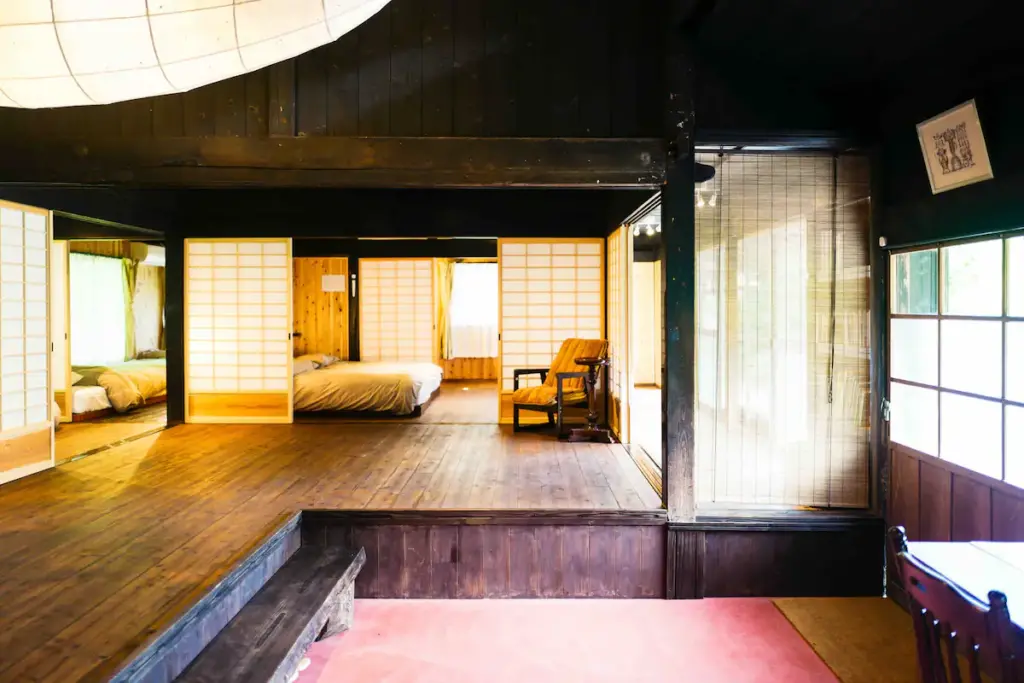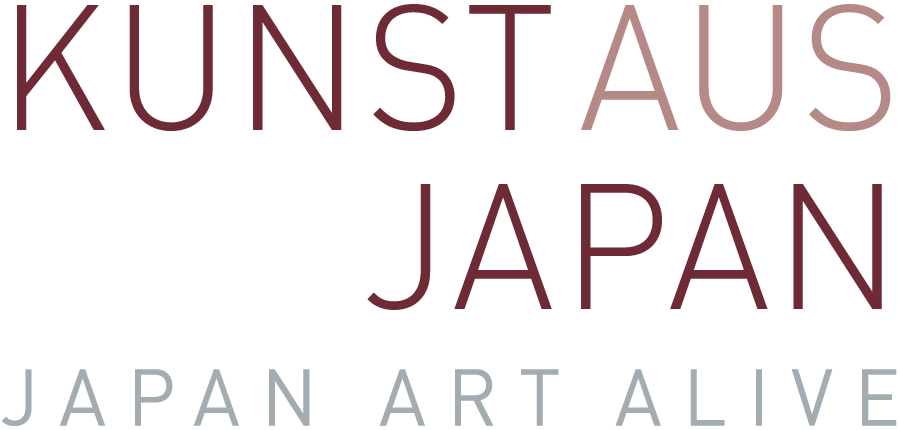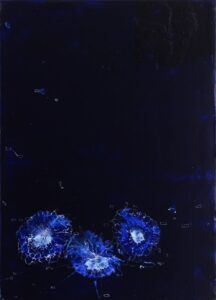How big is the challenge to revitalize an abandoned piece of farmland and some old, traditional houses that have been vacant for years? And – how difficult is all this in rural Japan, with all its social rules and specialties? I would say, it’s time for an interview.
How much creativity, energy and stamina does it take to open a farm-to-table café run according to ecological standards, as well as several guesthouses and, of course, to first make one’s own house habitable again? That’s what I asked J.X. Lee. He is a Singaporean, has lived in Japan for 11 years and has now ventured into this extraordinary adventure.
In Ryujinmura (Dragon God Village), a village of 3.500 people deep in the mountains of the Kumano region, his friend Shu, who had grown up in the region, had opened many doors for him. The door to the beauty of the region, the door to the locals of the valley, and ultimately the door to his land, which he leased. Personally, Lee’s commitment to land and houses had reminded me of that of other non-Japanese people like Alex Kerr or Sarah Marie Cummings. Both, especially as foreigners, appreciated the beauty of the old, traditional Japanese life. Both have also renovated old Japanese homes and engaged in cultural activities.
More about Lee’s projects and those of Kerr and Cummings in the article Inspiring projects: Ryunohara – kominka renovation and a farm-to-table project between Japanese aesthetics and sustainability (kominka renovation). Ultimately, however, I was left wondering about Lee’s very personal motivations and goals for embarking on this adventure. What really motivated him to take this highly individual path to the mountains of the Kumano region?

Interview with J.X. Lee about Ryunohara Kissa, his guesthouses and his principles to live in rural Japan
KAJ: What was your personal driver or your motivation to move to the countryside and to open a farm-to table café?
Lee: I love tea. I met Shu san at a tea festival several years ago and when I drank his tea I felt that it was full of energy. I asked him how he made it and he invited me to come to Ryujinmura to pick and make tea with him. I came several times, and he showed me more of the village each time. Once it was a waterfall we could bathe in, once it was a paper maker’s workshop, and another it was a charcoal kiln. I like how the mountains get misty every morning and evening, and how I can open the window to hear birds and have the fresh scent of greenery all the time. The cafe just became reservation-only (lunchtime only) from 1 August, because I have now opened a guesthouse (http://airbnb.com/h/ryunohara) and will open another early next year.

KAJ: Can you somehow identify with my association of Kerr and Cummings, the foreigners who appreciate and protect the beauty of Japan (please see my last blogpost about Ryunohara)? Or is your story a completely different one?
Lee: Alex Kerr’s first home, what is now Chiiori, is just across nearby Wakayama Bay. He has restored his historic farmhouse into a magnificent homestay without destroying any of its original character, so that has been an inspiration for Ryunohara. I’m not so familiar with Cummings.
I would not say that my aim is to protect the beauty of Japan per se, it is to revive and then preserve as many natural means of living as possible. The main house I have restored at Ryunohara is a thatched-roof kominka, but it was clad with zinc sheeting on top some 50 years ago due to the high cost of maintaining the thatch. I hope to see it gone someday, like how all the plywood and modern band-aids have been stripped out of the three buildings here at Ryunohara during their renovations.
The same applies to the tea and rice I make. In the past people used no pesticides or herbicides and their crops grew healthily, so why can’t we do the same now? The same applies to the buildings – how did people survive without plastic foam, plastic barrier sheeting, etc all this while? It was by ventilating their houses well all year around, and I have seen firsthand for myself how these old buildings do better when allowed to perform as they had been built long-ago.
KAJ: How important is the aspect of aesthetics for everything you do? In prior articles on my blog I was thinking a lot about the Italian emperor Hadrian. It was said that he felt responsible for “the beauty of the world”, namely investing a lot in the beauty of his country. Is that something that resonates also with you?
Lee: Aesthetics are important, but they are only there to make the living environment feel good. I arrange flowers for the cafe and guesthouse because flowers bring colour into a building, but I am careful not to be ostentatious. Over-harvesting flowers from the garden means less for pollinators, and high maintenance indoors. I prefer to keep things simple, functional, not spartan, and have as little impact on the environment as humanly possible (air-conditioning for guest rooms for example are necessary due to the mid-day heat of the summer).
A lot of the time I receive furniture or materials from people in the village, and repurpose them for Ryunohara. A large portion of the furniture at Ryunohara are recycled, or passed-down items. This also means that many of them are really nice, because they were made decades ago when people bought things for their craftsmanship.
KAJ: How important are nature and sustainability for you? Why do you follow such strict rules when growing your plants?
Lee: Both are extremely important to me because we can see the environmental changes that have come about because of human activity. For example, the older people in the village (70 years and above), say they see only a third of the birds they used to see as children, and the river has about a tenth of the life it used to have. Driving down the country roads the windshield is rarely spattered with bugs these days. I can also taste the effect of extreme heat, or a prolonged winter on the tea plants. The birds and bees have died off because of overuse of pesticides and herbicides, the river killed due to the building of a dam, and the weather becoming more extreme because of industralisation in the last century.
At the same time most people think it is now impossible to plant without chemical fertilisers, pesticides, and herbicides. A very select few think it is still possible, but they are a very tiny minority. I want to see for myself how it is possible.

KAJ: When you moved into the 120-years old house, I guess, it was not the most luxurious place on earth. How (difficult) was the start in this house?
Lee: I lived in a construction site for the first few months, moving to different parts of the house as others were being renovated, so it was stressful and tiring. There were also many parts of the house that needed more work than initially thought, especially parts that could not be seen before other parts got demolished, that had to be repaired due to rot or termites. I also bathed in almost-freezing water for weeks because the water boiler was not working properly, and a new boiler had to be purchased after. At the same time I could see how it would be like after renovation every day, so it was a rewarding experience learning from the carpenters by watching them work.
KAJ: Have you ever had this „What the hell am I doing here???” moment?
Lee: Yes, work never seems to end! There is always more to do, especially where the garden and plants are concerned. There are also many things about the buildings that have to be improved over time.
KAJ: Are there many young people who are driving similar projects like yours? If yes, what do you think is the reason?
Lee: No, not many. The Japanese countryside, as with all countrysides, are relatively closed, tight-knit, communities. Young people growing up in such communities may end up feeling stifled by all the attention, and social restrictions, while young people from the outside have no connections that enable them to find homes in the first place. I was lucky to meet Shu-san, and to have picked a part of the village that has very welcoming people. Others may not be as lucky.
KAJ: Is there a trend towards more cultural preservation, sustainability and mindfulness in Japan?
Lee: Yes, I attended the inaugural Kominka Summit in Kyoto 2 years ago and was pleasantly surprised to see many people doing the same thing. At the same time, traditionally-built houses are being destroyed at a very fast pace all over the country. The natural farming movement in Japan is also growing strong, but it is still a very tiny movement. There are small numbers in Japan who are working towards preservation and sustainability, but larger numbers who are not.
KAJ: What are your mid- to long-term goals?
Lee: I wish to build a garden with native plants all around Ryunohara, have more time to make tea, and provide a space for volunteers to come and experience life in rural Japan for themselves. I aim to stabilise my guesthouse operations, hire people to work here with me, and also teach volunteers to plan and direct rice planting in the traditional manner themselves (I currently lead every part of the rice planting because it is our first year), within the next 5 years. I hope to see the native garden come up within the next 10, and hopefully in 20 years reintroduce thatched roofs back here.
KAJ: How can we support you even from outside Japan?
Lee: Explore building with natural materials, natural farming, and drink the best tea you can possibly find. Having like minded people across the world makes for interesting comparisons, and learning opportunities.
We are happy to do so!








Schreibe einen Kommentar